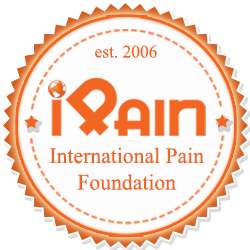Machine operators are essential in many industries, including manufacturing, construction, and more. However, the nature of their profession frequently entails lengthy hours and repetitive duties, which can result in persistent pain. This can also cause discomfort.
The machine operation industry has made great strides in enhancing quality of life in recent years. It also affects working circumstances for individuals with chronic pain.
What Can Machine Operators Expect While Working with Chronic Pain?
It can be physically and psychologically taxing to work as a machine operator when suffering from chronic pain. Prolonged standing, lifting, or using heavy machinery can be challenging when dealing with chronic pain, which rheumatoid arthritis, repetitive strain injuries, or other diseases can bring.
Decreased Productivity:
A machine operator’s capacity to operate effectively might be hampered by chronic discomfort, harming output and job performance.
Long-term pain can cause weariness and discomfort, which makes it more challenging to concentrate on duties and raises the possibility of mishaps or mistakes.
Physical Restrictions:
A machine operator may experience physical limitations due to chronic pain, requiring them to modify their work habits to account for their condition.
Innovations for Machine Operators with Chronic Pain
Thankfully, developments in ergonomics and technology have produced solutions intended to alleviate these issues and enhance the working environment for machine operators who experience chronic pain.
Ergonomic Equipment:
These days, many manufacturers create machinery and equipment with ergonomic designs to lessen the physical strain on the operator. Ergonomic tools feature movable controls, armrests, and chairs to suit a variety of body shapes and physical constraints.
Helpful gadgets:
Machine operators who suffer from chronic pain can benefit from various practical gadgets. Some are wearable technologies known for real-time input on posture, movement, and exoskeletons. This helps lessen the physical strain of lifting.
Pain management programs:
Several businesses have implemented programs for pain management to help manage pain.
These programs provide resources, including physical therapy, counseling, and access to pain management drugs.
Virtual Reality (VR): With VR technology, immersive environments can be created to help machine operators control their pain and suffering during extended shifts.
This cutting-edge method can lessen pain perception and increase concentration.
Advancements in the Machine Operation Industry for Sufferers
A more accommodating industry that understands their unique needs is helping machine operators who suffer from chronic pain.
Training programs are becoming more inclusive by including instruction on ergonomics, good body mechanics, and pain management strategies to assist workers in avoiding injuries and effectively controlling their discomfort.
Workplace Modifications:
Companies are becoming increasingly receptive to giving machine operators with chronic pain ergonomic workstations, flexible work schedules, and more regular breaks.
Advocacy and Support
Unions and industry associations are assiduously promoting the rights and welfare of machine operators, urging the improvement of working conditions and the provision of benefits customized for individuals suffering from chronic pain.
Significant progress has been made in easing the working environment for machine operators who experience chronic pain thanks to innovations in the sector.
These improvements not only increase their comfort and productivity but also show how important it is to prioritize the welfare of these vital employees.
There is hope for a more accommodating work environment in the future for machine operators who are dealing with chronic pain as technology advances and inclusive workplace practices increase.
Article by Brittany Cotton
Published by International Pain Foundation, iPain Blog, Team iPain

